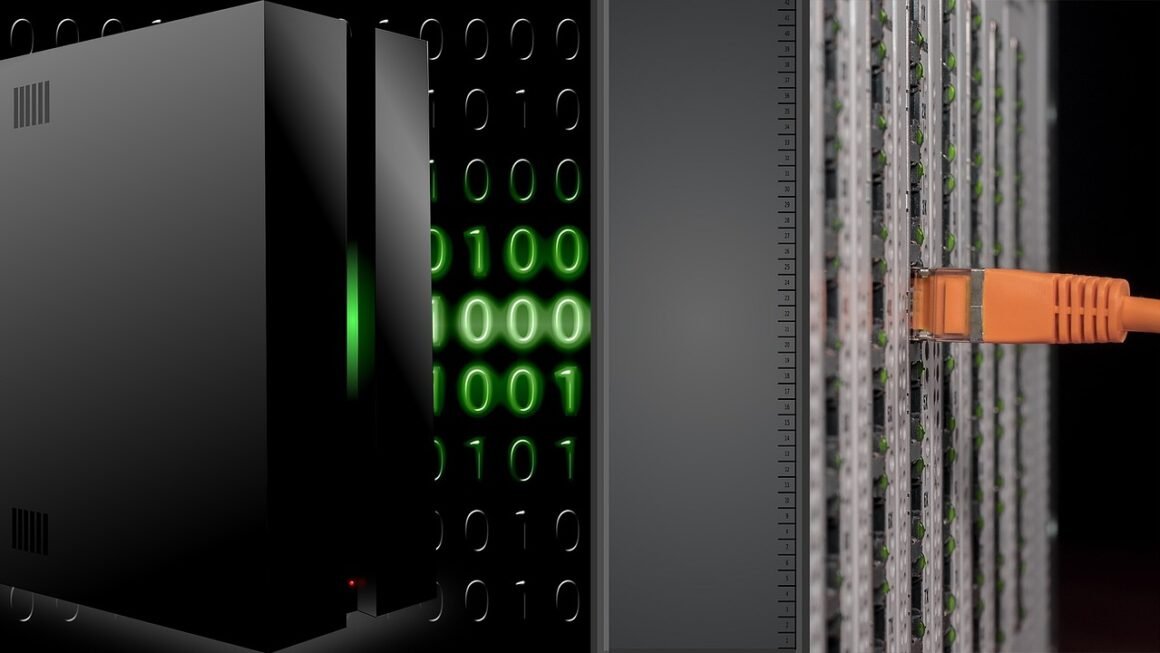Cyberattacks are no longer a matter of “if,” but “when.” In today’s digital landscape, organizations face a constant barrage of threats, from ransomware and phishing to data breaches and denial-of-service attacks. Simply focusing on prevention is no longer enough. To truly protect themselves, businesses need to build cyber resilience – the ability to withstand, adapt to, and recover quickly from cyber incidents. This blog post will explore what cyber resilience means, its key components, and how you can implement it within your organization to enhance your cybersecurity posture and ensure business continuity.
What is Cyber Resilience?
Defining Cyber Resilience
Cyber resilience is more than just cybersecurity. It’s a holistic approach that encompasses the people, processes, and technologies an organization uses to anticipate, withstand, recover from, and adapt to adverse conditions, stresses, attacks, or compromises to information systems that support its mission. Think of it as your organization’s immune system for the digital world.
- Anticipate: Identifying potential threats and vulnerabilities before they can be exploited.
- Withstand: Implementing security measures to prevent attacks and minimize their impact.
- Recover: Having a plan in place to quickly restore systems and data after an incident.
- Adapt: Learning from past incidents and continuously improving security practices.
Why Cyber Resilience is Crucial
In a world where cyberattacks are increasingly sophisticated and frequent, cyber resilience is essential for:
- Business Continuity: Minimizing downtime and ensuring critical operations can continue during and after an attack.
- Data Protection: Safeguarding sensitive information from theft, loss, or corruption.
- Reputation Management: Maintaining customer trust and brand reputation in the face of a cyber incident. According to a recent study by IBM, the average cost of a data breach in 2023 was $4.45 million. Implementing cyber resilience measures can significantly reduce this financial impact.
- Regulatory Compliance: Meeting the requirements of regulations such as GDPR, HIPAA, and PCI DSS.
Key Components of a Cyber Resilience Strategy
A robust cyber resilience strategy involves several key components working in harmony.
Risk Assessment and Management
Identifying Vulnerabilities
The first step is to understand your organization’s risk profile. This involves identifying potential threats and vulnerabilities across your IT infrastructure, applications, and data assets.
- Conduct regular vulnerability scans: Use automated tools to identify known vulnerabilities in your systems and software.
- Perform penetration testing: Hire ethical hackers to simulate real-world attacks and identify weaknesses in your security defenses.
- Analyze threat intelligence: Stay informed about the latest cyber threats and vulnerabilities that could impact your organization.
Prioritizing Risks
Once you’ve identified potential risks, you need to prioritize them based on their likelihood and potential impact. This will help you focus your resources on the most critical areas.
- Develop a risk register: Document all identified risks, their likelihood, potential impact, and mitigation strategies.
- Use a risk assessment framework: Consider using frameworks like NIST Cybersecurity Framework or ISO 27001 to guide your risk assessment process.
- Regularly review and update your risk assessment: Cyber threats are constantly evolving, so it’s important to regularly review and update your risk assessment to ensure it remains relevant.
Security Controls and Prevention
Implementing Security Measures
This component involves implementing a range of security controls to prevent attacks and minimize their impact.
- Firewalls and intrusion detection/prevention systems: These act as your first line of defense, blocking malicious traffic and detecting suspicious activity.
- Endpoint security solutions: Protect individual devices from malware and other threats.
- Data loss prevention (DLP) solutions: Prevent sensitive data from leaving your organization’s network.
- Multi-factor authentication (MFA): Add an extra layer of security to your accounts by requiring users to provide multiple forms of authentication.
- Security awareness training: Educate your employees about cyber threats and how to avoid becoming victims of phishing scams or other attacks. For example, simulated phishing campaigns can significantly improve employee awareness.
Patch Management and Configuration Management
Keeping your systems up-to-date with the latest security patches is crucial for preventing exploitation of known vulnerabilities. Proper configuration management ensures that your systems are configured securely and according to best practices.
- Establish a patch management process: Regularly scan for and install security patches for all your systems and software.
- Use a configuration management tool: Automate the process of configuring and managing your systems to ensure they are securely configured.
- Enforce strong password policies: Require users to create strong passwords and change them regularly.
Incident Response and Recovery
Developing an Incident Response Plan
Even with the best security measures in place, it’s still possible for a cyberattack to succeed. That’s why it’s crucial to have a well-defined incident response plan (IRP) in place. The IRP should outline the steps to be taken in the event of a security incident, including:
- Incident detection and analysis: How to identify and assess potential security incidents.
- Containment and eradication: How to stop the spread of an attack and remove malicious code from your systems.
- Recovery: How to restore systems and data to a secure state.
- Post-incident activity: How to analyze the incident, identify lessons learned, and improve your security practices.
- Example: An incident response plan should detail roles and responsibilities, communication protocols (internal and external), and escalation procedures. Regularly test the plan through simulations and tabletop exercises.
Data Backup and Recovery
Regularly backing up your data is essential for recovering from data loss events, such as ransomware attacks or hardware failures.
- Implement a robust backup strategy: Back up your data regularly to a secure, offsite location.
- Test your backups: Regularly test your backups to ensure they can be restored successfully.
- Consider using cloud-based backup solutions: Cloud-based backup solutions offer a cost-effective and scalable way to protect your data.
Monitoring and Detection
Implementing Security Monitoring Tools
Continuous monitoring is crucial for detecting suspicious activity and responding to security incidents quickly.
- Security Information and Event Management (SIEM) systems: These collect and analyze security logs from across your IT infrastructure, providing real-time visibility into potential threats.
- Network traffic analysis (NTA) tools: These analyze network traffic to identify malicious activity.
- User and Entity Behavior Analytics (UEBA) tools: These analyze user and entity behavior to detect anomalies that could indicate a security breach.
Threat Intelligence and Information Sharing
Staying informed about the latest cyber threats and vulnerabilities is crucial for protecting your organization.
- Subscribe to threat intelligence feeds: These provide information about emerging cyber threats and vulnerabilities.
- Participate in information sharing communities: Share information about cyber threats with other organizations in your industry.
- Monitor social media and news sources: Stay informed about the latest cyber threats and vulnerabilities.
Adaptability and Learning
Continuous Improvement
Cyber resilience is not a one-time project but an ongoing process of continuous improvement.
- Conduct regular security audits: Identify areas where your security practices can be improved.
- Learn from past incidents: Analyze past security incidents to identify lessons learned and improve your security defenses.
- Stay up-to-date with the latest security trends: Continuously learn about new cyber threats and vulnerabilities and adapt your security practices accordingly.
Training and Awareness
A well-trained workforce is a critical component of cyber resilience.
- Provide regular security awareness training: Educate your employees about cyber threats and how to avoid becoming victims of phishing scams or other attacks.
- Conduct phishing simulations: Test your employees’ ability to identify phishing emails.
- Encourage employees to report suspicious activity: Create a culture where employees feel comfortable reporting suspicious activity.
Conclusion
Cyber resilience is a critical requirement for organizations operating in today’s threat landscape. By implementing a comprehensive strategy that includes risk assessment, security controls, incident response, monitoring, and continuous improvement, organizations can significantly enhance their ability to withstand, adapt to, and recover from cyberattacks. Prioritizing cyber resilience is not just about protecting data; it’s about safeguarding business continuity, maintaining customer trust, and ensuring long-term success. Make cyber resilience a cornerstone of your organizational strategy today.



